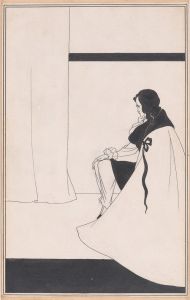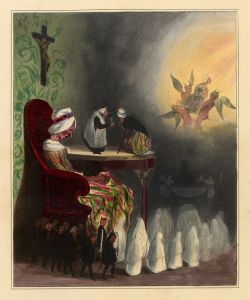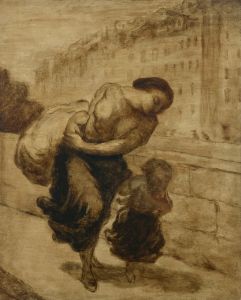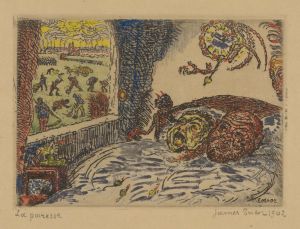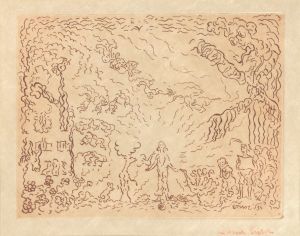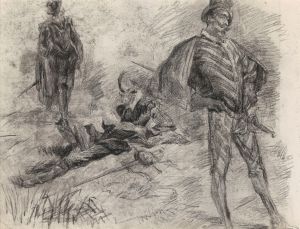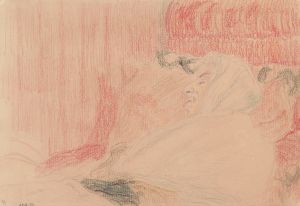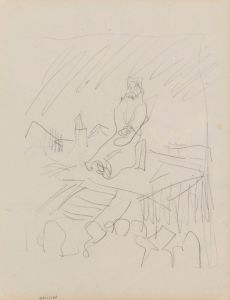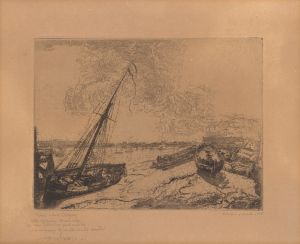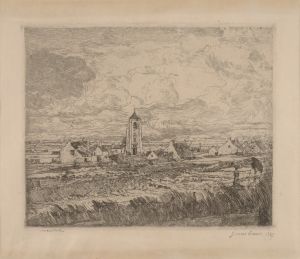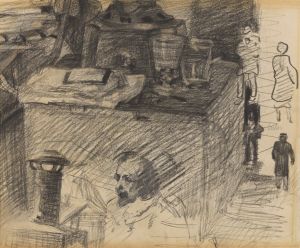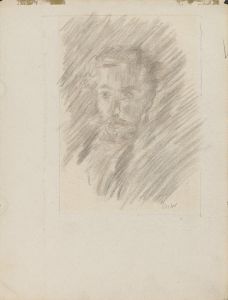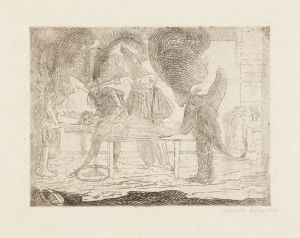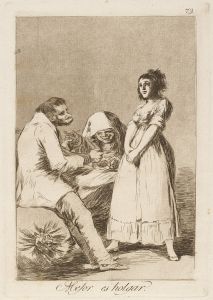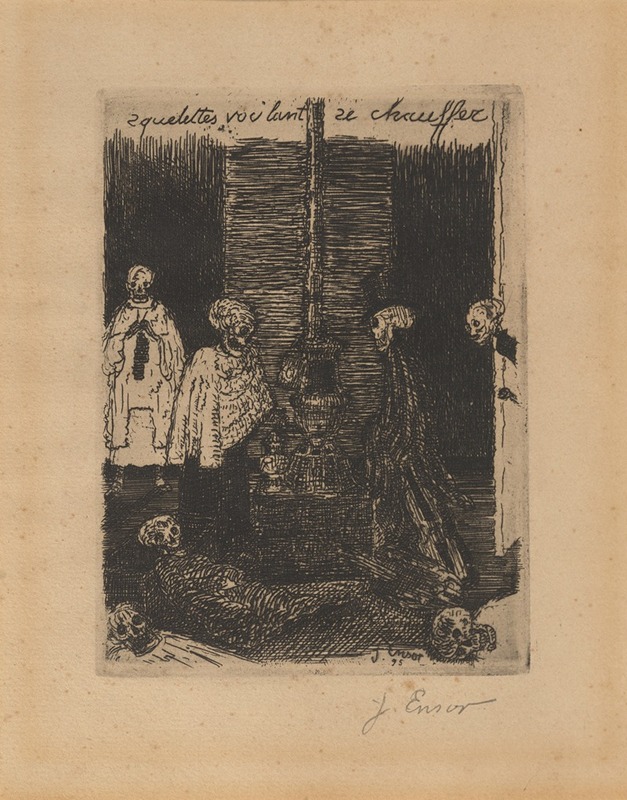
Geraamten die zich willen warmen
A hand-painted replica of James Ensor’s masterpiece Geraamten die zich willen warmen, meticulously crafted by professional artists to capture the true essence of the original. Each piece is created with museum-quality canvas and rare mineral pigments, carefully painted by experienced artists with delicate brushstrokes and rich, layered colors to perfectly recreate the texture of the original artwork. Unlike machine-printed reproductions, this hand-painted version brings the painting to life, infused with the artist’s emotions and skill in every stroke. Whether for personal collection or home decoration, it instantly elevates the artistic atmosphere of any space.
James Ensor, a prominent Belgian painter and printmaker, is known for his unique and often provocative style that blends elements of symbolism and expressionism. One of his notable works is "Geraamten die zich willen warmen," which translates to "Skeletons Warming Themselves." This painting is a quintessential example of Ensor's fascination with macabre themes and his ability to infuse them with social commentary and dark humor.
Created in 1889, "Skeletons Warming Themselves" reflects Ensor's interest in the grotesque and the absurd. The painting depicts a group of skeletons gathered around a stove, attempting to warm themselves. This imagery is characteristic of Ensor's work, where he frequently used skeletons and masks to explore themes of mortality, the human condition, and the superficiality of societal norms. The skeletons, devoid of flesh and life, are ironically engaged in a very human activity, highlighting the absurdity of their situation and, by extension, the absurdity of human endeavors.
Ensor's use of skeletons can be seen as a critique of the society of his time. The late 19th century was a period of significant social and political change in Europe, marked by industrialization, urbanization, and shifts in social structures. Ensor, through his art, often commented on the hypocrisy and pretensions of the bourgeoisie. The skeletons in this painting may symbolize the emptiness and futility of societal pursuits, suggesting that beneath the surface, all humans are ultimately the same.
The composition of "Skeletons Warming Themselves" is notable for its vibrant use of color and dynamic brushwork, which are hallmarks of Ensor's style. Despite the morbid subject matter, the painting is imbued with a sense of energy and movement. Ensor's bold use of color and light creates a striking contrast between the skeletal figures and their surroundings, drawing the viewer's attention to the central theme of the work.
Ensor's work was not always well-received during his lifetime. His unconventional style and subject matter often put him at odds with the artistic establishment of the time. However, his influence on later artists, particularly those associated with expressionism and surrealism, is widely recognized today. "Skeletons Warming Themselves" exemplifies the qualities that make Ensor's work enduringly relevant: a fearless exploration of taboo subjects, a keen eye for social critique, and a distinctive artistic vision.
Today, James Ensor is celebrated as one of Belgium's most important artists, and his works are held in high regard in museums and collections worldwide. "Skeletons Warming Themselves" continues to captivate audiences with its unique blend of humor, horror, and insight into the human condition. Through this painting, Ensor invites viewers to reflect on the nature of existence and the societal constructs that shape our lives, all while maintaining a sense of playfulness and irony that is uniquely his own.





